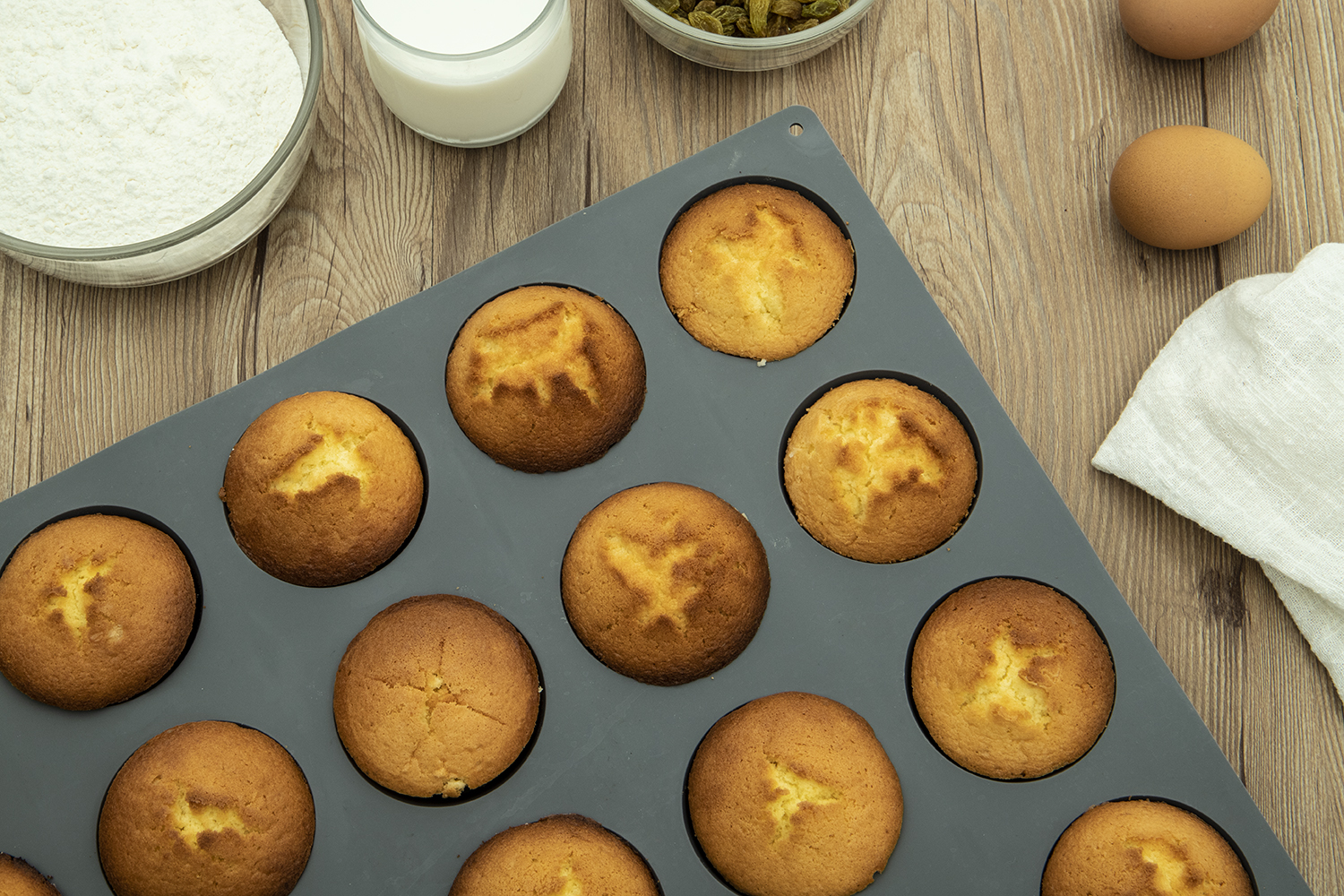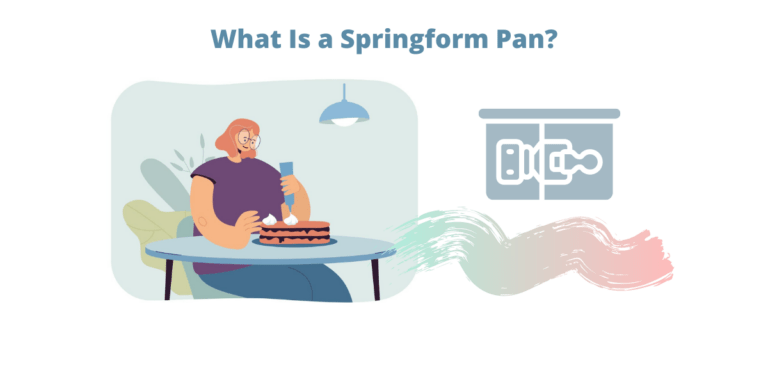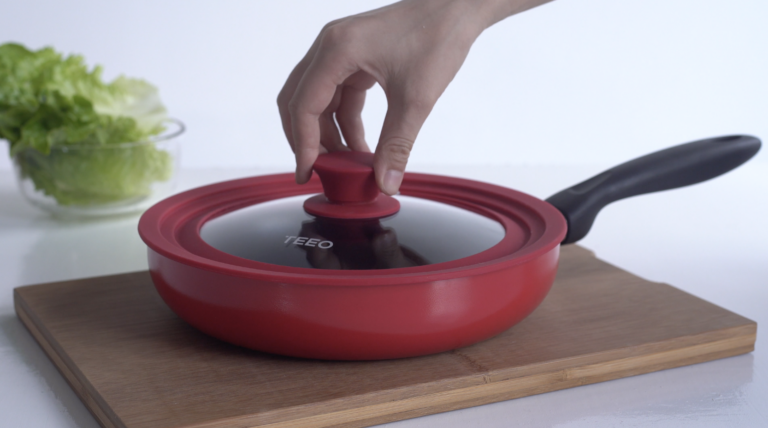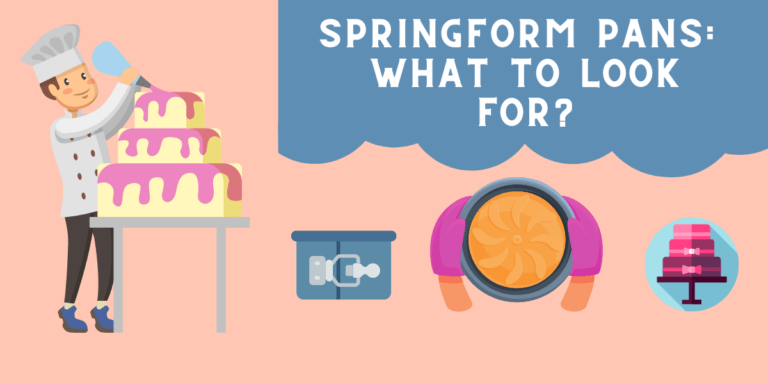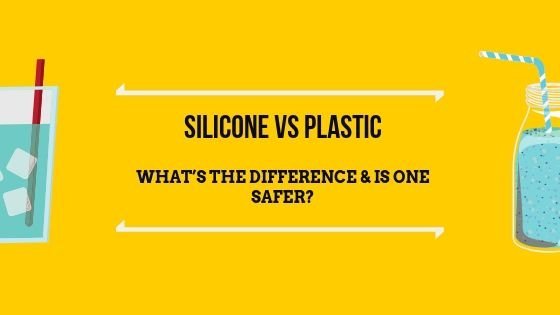The ultimate guide to the best baking pans and sheets on the market
Baking pans are used for everything from baking cookies on a baking tray to making a pizza crust in an air-bake oven. But which type is best? What should you look for when shopping for your next loaf or cake mix?
In this article, I will introduce you to different types of bakeware and explain their strengths and weaknesses so that by reading it, you can make an educated choice on which type of pan is best for your needs.
I hope you enjoy reading this article, and I will be more than happy to answer any questions about baking pans in the comments section below!
Types of baking pans
Different baking pans are available to help the baker achieve a specific goal. If you walk through the baking aisle at your favorite kitchen store, you’ll notice that there are more baking pans to choose from than you could shake a stick at. A huge variety of baking pans and cake rings is constantly being released on the market, from pans that bake uniquely shaped cakes to pans that are ideally suited to baking various baked goods.
When it comes to bakeware, you will never run out of choices. But which baking pans and cake rings should you have in your kitchen? Please keep reading about the different baking pans and cake rings and their purposes.
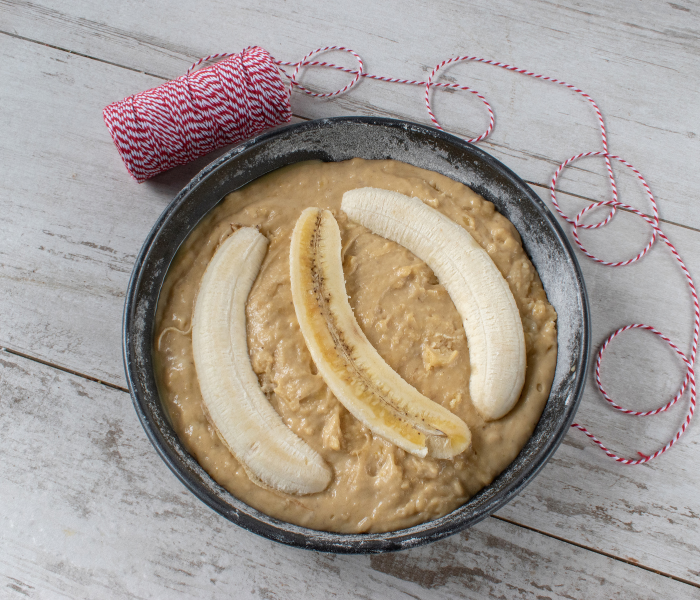
9-inch round cake pan
The right cake pan makes all the difference for the looks and taste of your cakes and desserts. This pan also comes in handy for baking brownies and other delectable treats. If you bake cakes or desserts regularly, you need this type of cake pan for the best results. This pan can also be used for the occasional batch of brownies, which look a bit dressier if you bake them in a round pan and cut them into wedges.
Round cake pans come in almost every size, but the most common are 8″ and 9″. Most bakers prefer the 9-inch size because the layers bake slightly more quickly. It’s a good idea to have two in your arsenal so you can bake layer cakes more quickly.
9×13 baking pan
This all-purpose baking dish can be used for everything from roasting chicken to baking a cake. It has higher sides than a sheet pan, making it better for cakes than cookies. However, many bakers find it the perfect size for rimmed baking sheet cakes and most baking mixes, making it perfect as a pan when you need a quick batch of brownies or a cake for a party.
8″ baking pan
A small, square-shaped baking dish is ideal for brownies and bar cookies. Although it can be difficult to double a recipe to fit a 9-by-13-inch pan, this pan size is typically what most recipes expect. So if you tend only to double a recipe to save room, having enough space to bake all the bar cookies you want to try may be difficult.
Pie plate
You must have a pie dish or pan to make pie. But you can use the pie dish or pan for baking other treats like brownies, loaf cakes, and many more.
Ceramic plates are known for producing deeper browned crusts. However, glass plates are also an excellent choice because you can easily see the color of your crust while the pie is in the oven.
Rectangular baking pan
A rectangular baking pan has the same fit as a regular oven pan, and square baking pans produce nicer-looking cakes that don’t have corner pieces.
Half-sheet and full-sheet pans
These commercial-grade baking sheets have a shallow rim around the edge. They’re perfect for everything from roasting potatoes to baking cookies (you might know them as cookie sheets) and are real workhorses in the kitchen. In addition, the rim on the pan ensures that your parchment paper won’t accidentally slide off.
These come in a wide variety of sizes. However, the most popular size is the “half sheet” pan; it measures 12″ x 16″ and is a great standard size. In addition, you can find smaller sizes for very small ovens.
- Dump cakes
- Tres leches cake
- Poke cakes
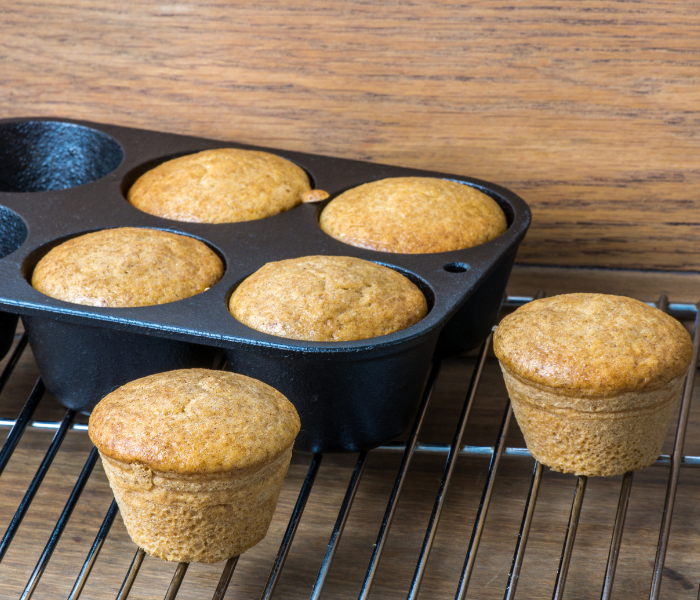
Muffin pan
Muffin and cupcake pans are must-haves for any baker, as they can be used to bake many tasty treats. You can use the baking pans and cake rings to make pop-overs, cupcakes, or muffins. Some types of cake can also be baked using a muffin tin. Muffin pans are exceptionally versatile and can substitute as a mini cheesecake pan.
A muffin pan makes it easy to produce a batch of identical personal-sized treats.
- Round cupcakes
- Personal cakes
- Yorkshire pudding
- Muffins
Loaf pan
Many bakers consider a loaf pan all-around bakeware since it can be used for sweet and savory treats. It can be used to bake anything from meatloaf to banana bread, but most bakers often reach for a loaf pan for quick bread recipes. These can also be used for yeasted pastries, of course, so you can easily make homemade sandwich bread. A loaf pan is the only way to get the thickness that makes bread so good.
Cookie sheet
A cookie sheet is like a baking pan but with less depth, making cookies not need to be held in the pan like a cake.
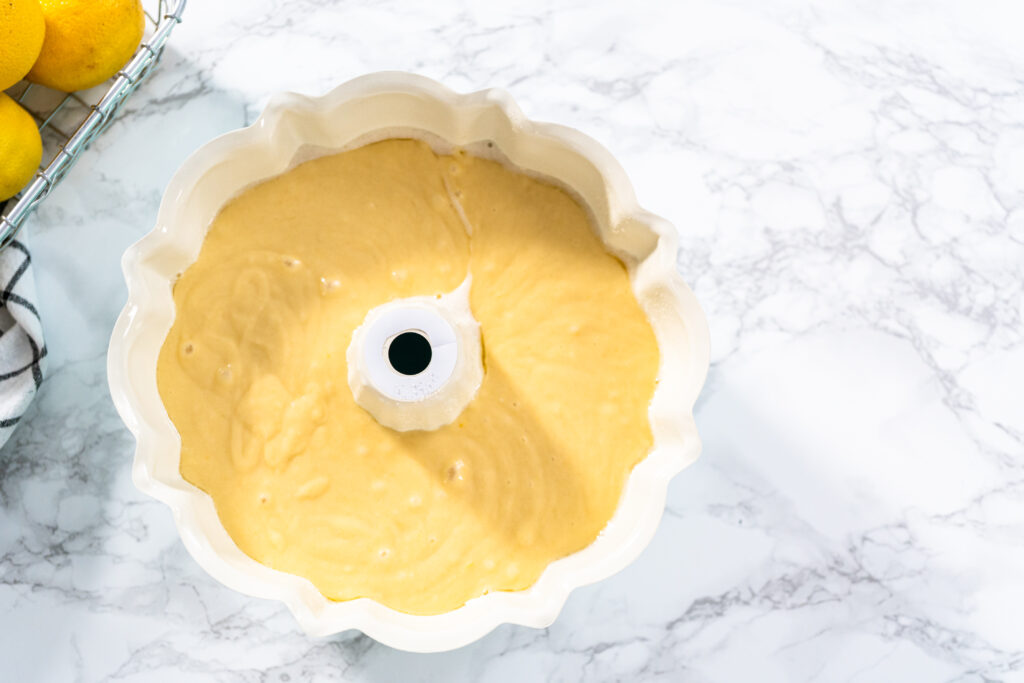
Bundt pan
Pound cakes and bundt cakes are two-piece wonders, cakes that do not need frosting to look beautiful when served. These deep and heavily pronged pans produce perfect coffee and pound cakes you can make and serve for any occasion. The variety of bundt pans can be overwhelming at first glance, but sticking with a traditional design is usually the easiest option.
- Coffee cakes
- Monkey bread
- Jell-O mold
- Breakfast casserole
- Whole roasted chicken
- Meatloaf
Tube pan
While they may resemble a bundt pan at first glance, tube pans are primarily used for baking lighter cakes, such as angel food and chiffon. Most tube pans have feet because airy cakes need to cool upside-down, and the feet keep the pan stable against the counter when inverted.
- Chiffon cakes
- Genoise cakes
- Angel food cakes
- Pineapple upsidedown cakes
Silicone springform pan
Also often referred to as a cheesecake pan. It’s like a cake pan with detachable sides, making it easier to remove the cake after baking.
- Cheesecake
- Crumb cake
- Ice cream cake
- Delicate tortes
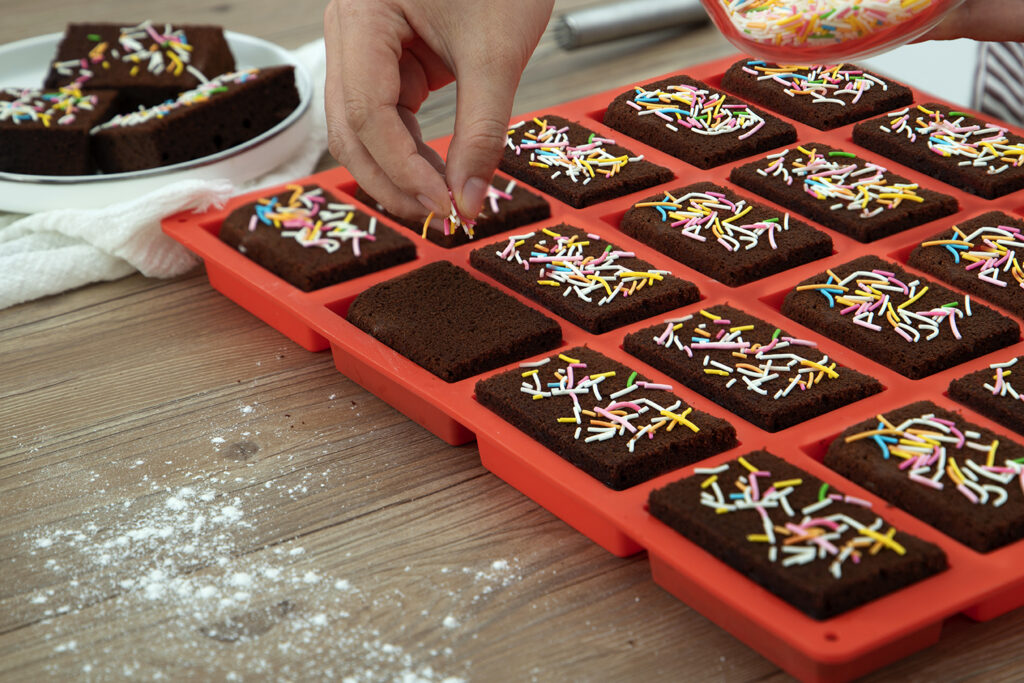
Silicone mold
Silicone molds are a versatile and cost-effective way to make small cakes and other pastries like muffins and brownies, as they can accommodate a variety of shapes to make a uniformly sized dessert. The flexible silicone material of the mold allows you to easily remove your desserts from the mold once they have cooled and customize the size and shape of your cake to fit your needs. In addition, this silicone is oven-safe and does not need to be lined like many other baking pans or cake rings; lightly greasing the mold before baking can be beneficial for some recipes.
- Quiches
- Eclairs
- Candies
- Cupcakes
Cake ring
Cake rings, like traditional baking pans cake rings, are great for making layered cakes as they have tall sides. Even though cake rings are bottomless, you can easily slide the ring off once the cake is completely cooled. Cake rings are an older version of the spring form pan, but they are not obsolete. Cake rings remain the best choice for cakes with extremely wet ingredients.
The cake ring, alternatively, can also be used as a cookie cutter to cut shapes out of sheet cakes. They can slice through the cooled cake to create a neat edge for intricate pastries and sweets made of thin metal. To bake a cake in a cake ring, place the cake ring on a sheet cake pan and then fill the ring with batter. Pouring your batter slowly helps to prevent leaking at the points where the ring meets the bottom of the pan.
- Mousse cakes
- Pudding cakes
- Custard cakes
Novelty cake pan
Novelty cake pans are available in various shapes, like hearts, pillows, diamonds, and petals, with tall sides and a flat bottom. An unmovable cake can be easily achieved when using a novelty cake pan. Still, every novelty cake pan needs to be carefully greased or floured to ensure your cake releases securely. Nevertheless, the use of novelty baking pans and cake rings is an excellent way for cake bakers to create artistic cakes with little time, difficulty, and waste and free up time for other, more creative tasks.
- Holiday themed cakes
- Character themed cakes
- Novelty cakes
Jelly roll cake pan
A jelly roll cake pan is a sheet pan with a 1-inch lip designed for baking and rolling thin cakes. While parchment paper and pan liners help prevent rolled cakes from sticking to the bottom of the pan and aid in the rolling process, they were originally designed to meet a niche need. However, jelly roll pans are versatile, too, helping with many cooking needs.
- Swiss rolls
- Yule logs
- Petit fours
- Pumpkin rolls
- Cookies
Next time you add a new dessert to your menu, this guide can help you narrow down all the types of cake pans to find the best option for your dish. By becoming familiar with both your recipe and the different types of baking pans and cake rings, you’ll be able to find the perfect tool for the job.
Popular brands of baking pans
There are many brands of baking pans on the market, each with pros and cons. Here is a list of some popular brands, along with their pros and cons:
Pyrex
Pyrex is a popular glass bakeware brand known for its durability.
Pros: Durable, easy to clean.
Cons: Can break if dropped or heated too quickly/ unevenly.
Anchor Hocking
Another popular brand of glass bakeware, Anchor Hocking, is also known for its durability.
Pros: Durable, easy to clean.
Cons: Can break if dropped or heated too quickly/unevenly.
Teeo
Silicone baking pans are becoming increasingly popular due to their flexibility and non-stick surface.
Pros: Flexible, non-stick surface.
Cons: It may not be as durable as other types of bakeware.
Nordic Ware
Nordic Ware is a family-owned and operated company that has been making baking pans since 1946. The company has a good reputation for the high quality of their products.
Pros: Makes simple and durable baking pans. Their products are often used in restaurants and bakeries because they are so versatile.
Cons: While their baking pans may not be the best in the industry, they are still a good option to consider.
How to choose the right baking pan for you
There are many different types of baking sheets and pans cake rings out in the marketplace, so it’s important to know what type you want before buying. Whether a new or experienced baker, you will probably need a baking sheet or pan to make your baked goods. The make of bakeware comes in many different materials, sizes, forms, and even in different shapes according to your preferences.
Since bakeware is essential for the baker, you must know what equipment to choose for your baking projects. Here are the tips you need to do just that.
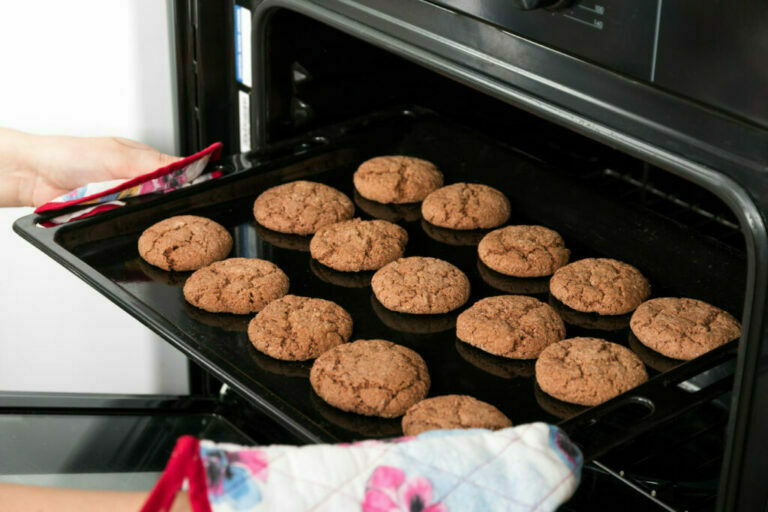
Choose the material
The only good reason for a dark baking sheet is the non-stick coating. When well-maintained, the coating on these sheets provides a slippery surface that prevents food from sticking to the surface. The only reason to get dark baking sheets is a non-stick coating. When kept well-maintained, the coating on these sheets will provide a slippery surface that prevents food from sticking to the surface. These baking pans’ cake rings will brown and burn your baked goods faster than usual, so take note when baking on darker-colored pans.
Test thickness
Buying new baking sheets and pans helps to hold them in your hands and test their thickness. While the material is a point of debate, thin, flimsy baking pans and cake rings are not good equipment. Why? Thin sheets and baking pans cake rings will warp over time. Thin, cheap materials won’t heat evenly, harming any cooking or baking process. Also, because thin materials don’t distribute heat well, your baked goods will burn easily and quickly.
Check the size
Make sure you have the right size oven before you purchase your bakeware. Not all ovens come in an exact size, and sometimes they are too small to fit a full-sized baking sheet. First, measure the inside of your oven to determine if the oven is a proper size for a cooking pan. You will also need to make sure that there is enough room above and below it for it to fit.
To find out if your bakeware will fit in your oven, grab the pan and go to the department where the ovens are being sold. A well-fitting oven will save you the trouble of buying a new one. First, measure your oven and ensure it has enough space on all sides, then find something that closely matches its size.
Frequently asked questions
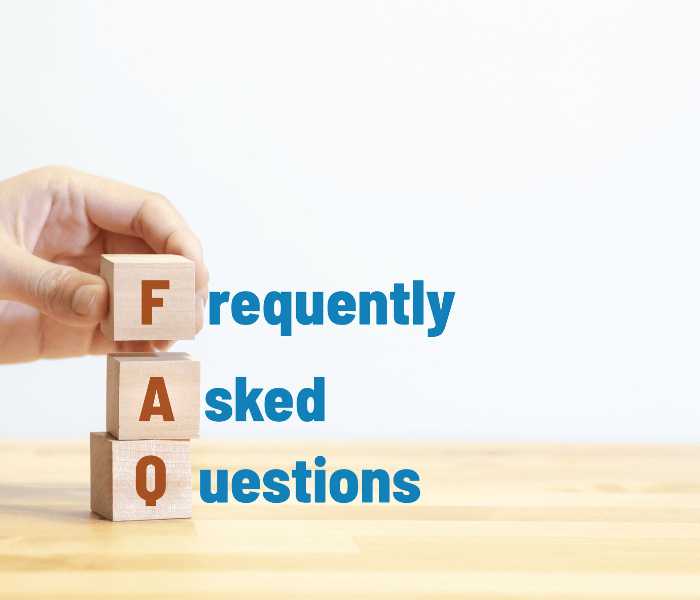
There are several different types of baking pans on the market, each with unique benefits. Here is a guide to the most popular types of baking pans so that you can choose the best one for your needs:
Which is better for baking, aluminum or silicone?
Silicone is the new kid on the baking block; it is very flexible and can be used for releasing food, making it an ideal choice for food preparation. One can use silicone in the freezer, microwave, or oven for baking. Additionally, silicone can be put in the dishwasher, whereas most metal bakeware cannot.
Which material is best for baking cakes?
Carbon steel is a staple in many restaurant kitchens, as it is pressed from raw, heavy-gauge steel. This kind of steel is more robust and durable than aluminum, so it’s a better choice if you’re looking for a baking pan that can handle any dish. For example, carbon steel baking pans and cake rings are ideal for casseroles, cakes, bread, pies, and other desserts.
Can I use a cake pan for cookies?
Yes, but it is recommended to turn the pan upside-down and bake the cookies on the bottom instead of inside the pan. Cookie sheets don’t have sides because heat can circulate more evenly around the cookies as they bake. Baking cookies inside a pan with sides will make the heat unable to circulate. As a result, they will cause the cookies to bake unevenly.
What are the parts of a springform pan?
A springform pan is a cake pan with a seal on the base that prevents leaks and spills. In addition, the groove around the base ensures that liquid doesn’t seep out, and the spring-lock buckle ensures that your cheesecake will not come undone.
How do you use a springform pan?
A springform pan is a baking pan with sides that can be released from the base so the cake or dessert can be removed easily. They have a tight seal around the edge to prevent leaks and spills, and the groove on the base prevents liquid from seeping out.
A springform pan is a baking pan with sides that can be released from the base. The dessert or cake in a springform pan can be removed easily. The spring-lock buckle is sturdy, and the anodized aluminum makes it durable.
What is special about a springform pan?
Springform pans are popular because they have a tight seal that prevents leaks and spills, making them ideal for delicate cakes like cheesecakes and tortes. The construction method is durable and doesn’t stain or bend, making it a good choice for repeated use.
The springform pan is a popular baking pan because it is leak-proof and has a locking mechanism that keeps the cake intact while it bakes. Additionally, the springform pan is easy to use and has a nice motion that makes removing the cake from the pan much easier.
What is the difference between a springform pan and a regular pan?
The springform pan is a type of cake pan that has a tight seal to prevent leaks and spills. The base is ringed with a groove where the walls connect, making it possible to remove cakes without damaging delicate details.

